Plant Profiles: Dwarf Sagittaria Care Guide (April 2024)

If you want to create a stunning aquascape with a lush green carpet that sways gently with the water temperature and current and provides a natural habitat for your fish and shrimp, you might think you need a lot of experience and equipment.
After all, most carpeting plants are notoriously difficult to care for, requiring carbon dioxide enrichment, good fertilizer, and intense lighting to thrive.
But what if we told you there is a good plant, a carpeting plant that can grow in almost any aquarium, even a beginner’s one?
Meet Dwarf Sagittaria, one of the easiest and most versatile aquatic plants you can find. Interested in learning about other plants that would work well in a nano tank? See our article on the best nano aquarium plants!
In this article, we will tell you everything you need to know about Dwarf Sagittaria care and how to keep green plants to make the most of this amazing plant.
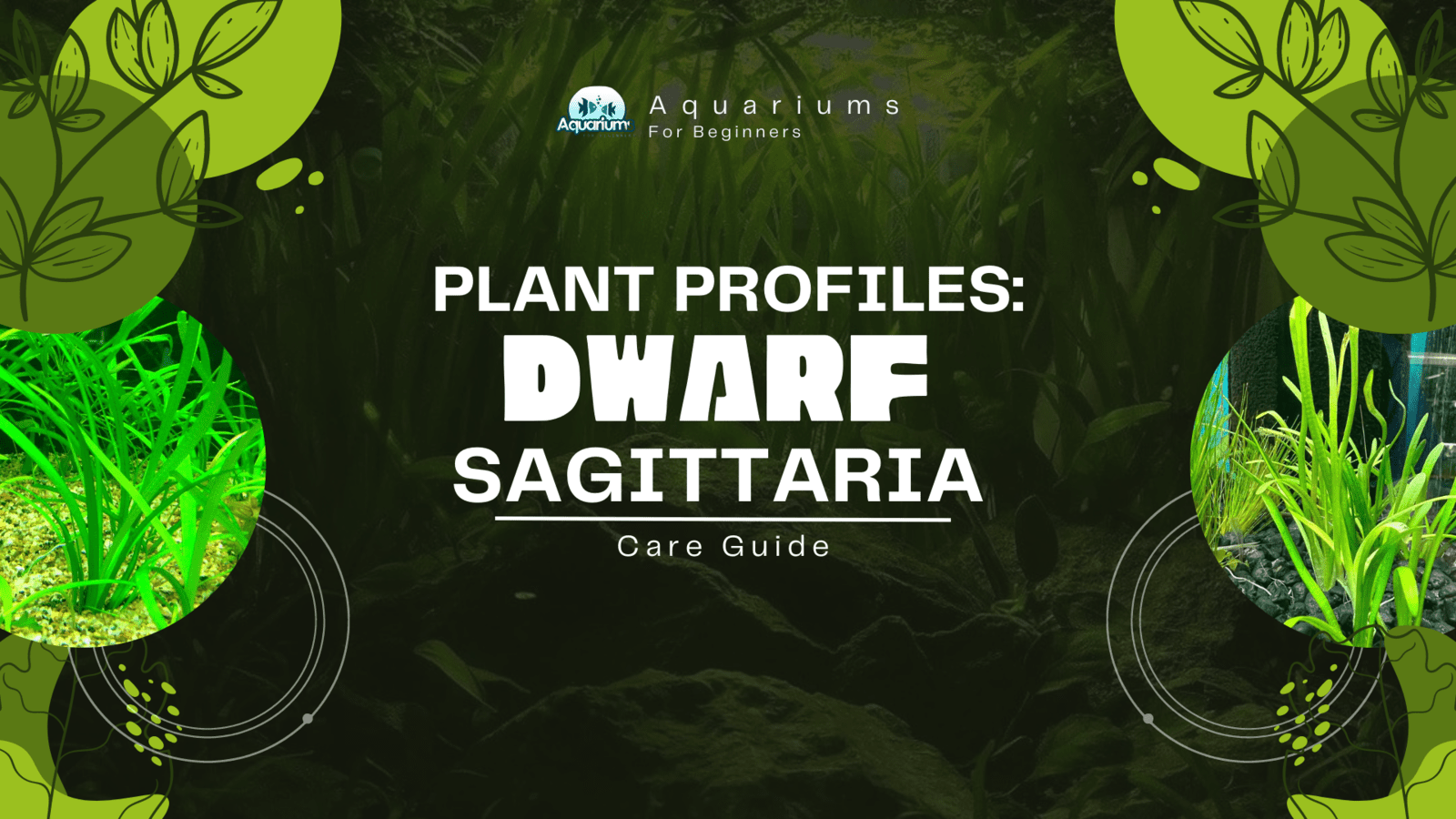
Overview of Dwarf Sagittaria
Dwarf Sagittaria, known as Awl-leaf Arrowhead, Hudson Sagittaria, and Ribbon Wapato, is commonly regarded as a beginner-friendly plant in the aquarium hobby.
Scientifically termed Sagittaria Subulata, are a group of plants found all over the world in shallow, marshy regions where water levels tend to fluctuate and lighting is moderate to strong. Dwarf Sagittaria Subulata var is the smallest of the group, staying 3 inches high in aquariums with strong lighting and up to 6 inches high when the lighting is weaker.
Dwarf Sagittaria is native to North and South America and is also an amphibious plant! Meaning, as an amphibious species, it can grow both fully and partially submerged soft water.
The plant propagates by producing multiple runners, and it is perennial plant best situated in the foreground of an aquarium. Occasionally, it may require replacement.
The Dutch began breeding the dwarf variant of Sagittaria over four decades ago, and it has since become a favorite among aquarium enthusiasts.
Dwarf Sagittaria Appearance
This little green superstar is like the understated-yet-charming set piece in an underwater blockbuster. With its slender, bright green leaves, it gracefully arcs from a compact rosette, giving off some serious aquatic meadow vibes.
And when this little green diva hits its prime? Oh, you’re in for a treat! Stunning white flowers steal the show, popping up above the water’s surface like a standing ovation.
True sagittaria can top 2 feet or more in height and they all share a thick, grassy appearance that makes them popular for filling in open areas of your tank.
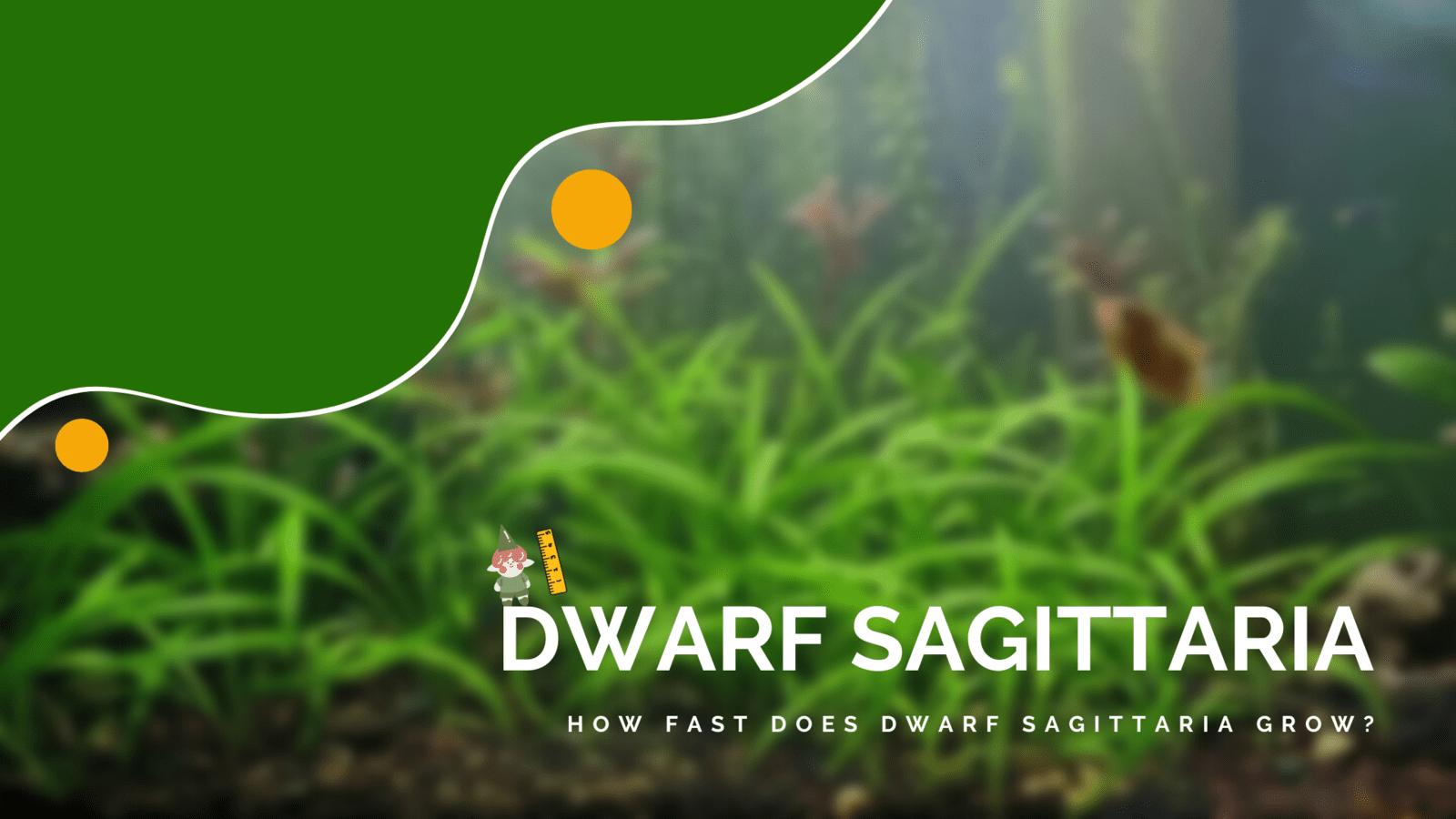
How Fast Does Dwarf Sagittaria Grow?
Dwarf Sagittaria is a fast-growing plant, with some aquarists reporting growth rates of up to 1 inch per week.
However, the growth rate is largely dependent on factors such as lighting, nutrient-rich substrate, and proper care. With the right conditions, this carpeting plant can spread quickly throughout the tank floor.
Fun Fact: In its natural habitat, Dwarf Sagittaria exhibits remarkable growth when transitioning from an aquatic to a non-aquatic environment. The leaves, typically measuring 0.04 to 0.28 inches (1 to 7 mm), expand to a size of 1 to 2 inches (2.5 to 5 cm) of leafy goodness!
And let’s not forget the stalk – it goes on a growth spurt too, stretching even longer than those fabulous leaves.
How Can I Encourage Faster Growth in Dwarf Sagittaria?
Dwarf Sagittaria is no diva; it’s a hardy plant that needs at least moderate nutrient loads to do well, with rich substrates being a better choice if you want the plant’s roots to carpet thickly. This hardy plant also gets a fair amount of nutrition from your fish, leftover food, and other sources of dissolved waste.
1. Eco-Complete (Substrate)
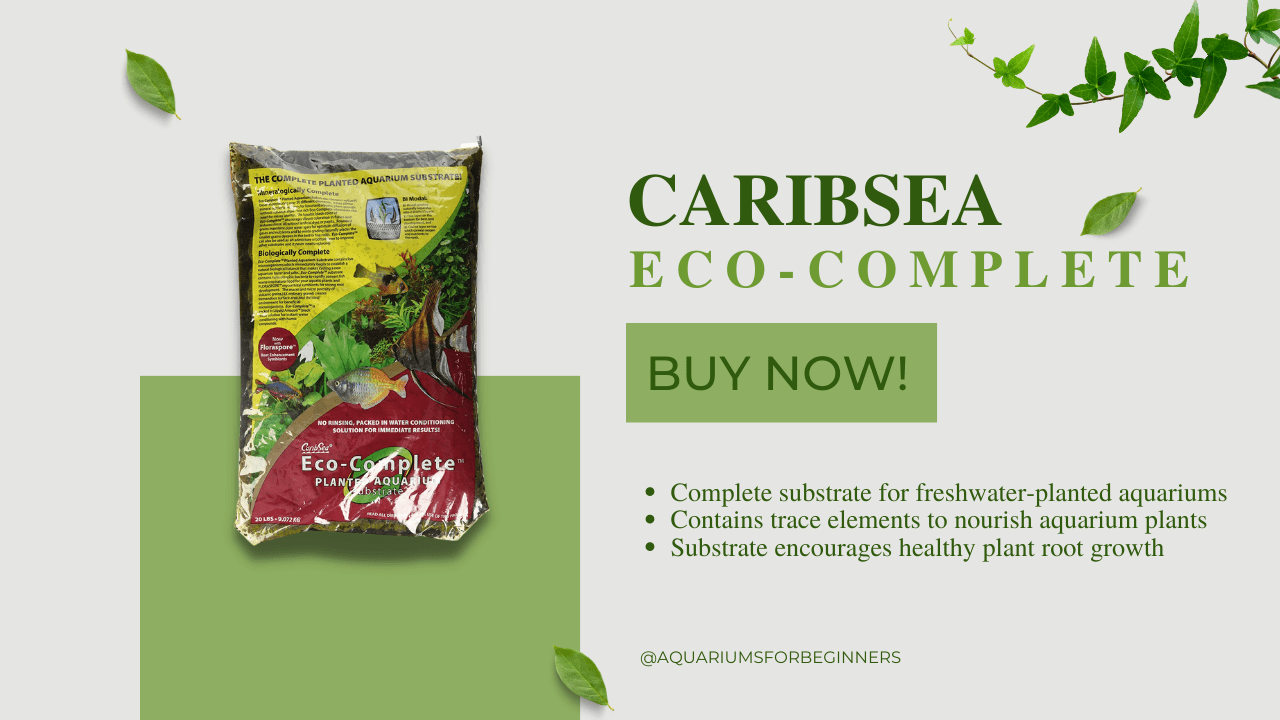
I prefer using clay or lava-rock based substrates like Eco-Complete because they have a high CEC (cation exchange capacity).
This means that floating nutrient molecules tend to be bound up into the physical matrix of the substrate particles and stay there until plant roots take them up. Absorbent substrates are especially good if you prefer using liquid fertilizers!
REMEMBER: To promote faster growth, ensure your Dwarf Sagittaria has access to adequate lighting, a nutrient-rich substrate, and a balanced fertilization regimen. You can also use liquid fertilizers, such as Seachem Flourish Iron, to address any iron deficiencies.
2. Seachem (Liquid Fertilizer)
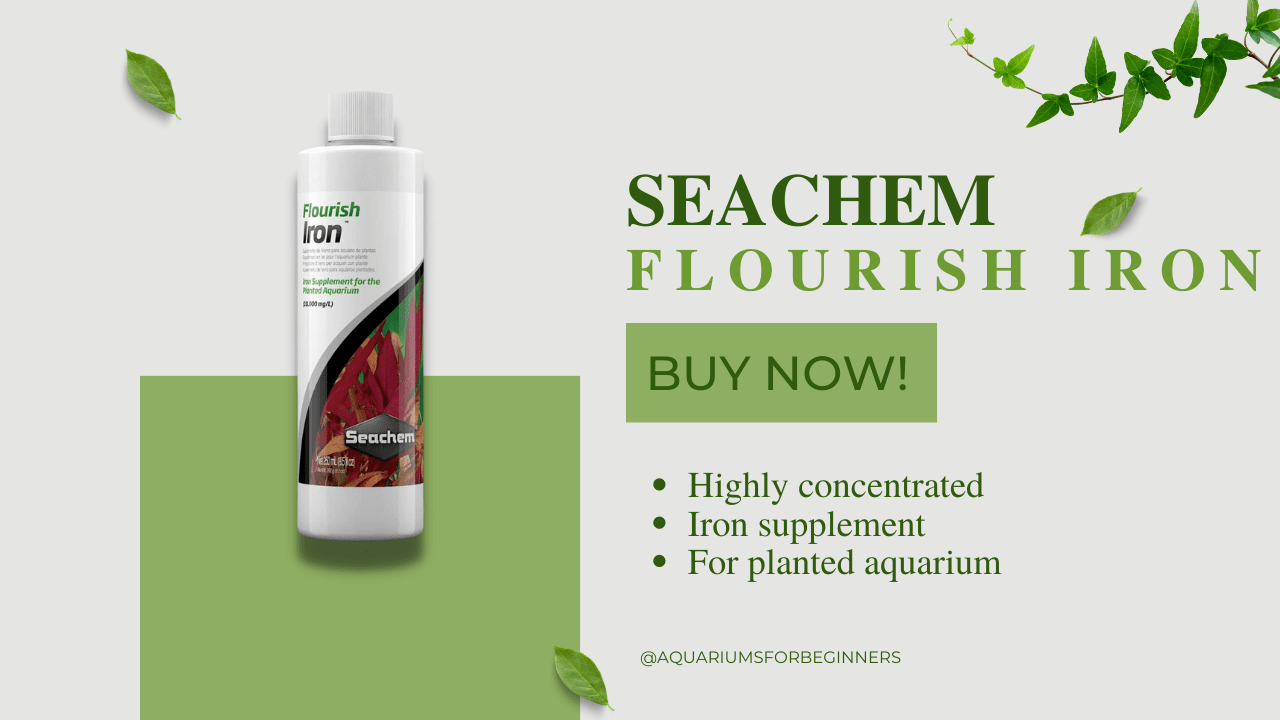
CO2 is as essential for plants as oxygen is for us animals. They use it to build the structural components of their bodies and without it, growth halts.
Sagittaria are very tolerant of tanks with no added CO2 but you won’t get the explosive growth that even a little extra CO2 provides. A carpet will form much faster when using enrichment!
Dwarf Sagittaria are more iron-hungry than other plants and supplementing this nutrient occasionally is always a good idea, especially in tanks that have been set up for a long time.
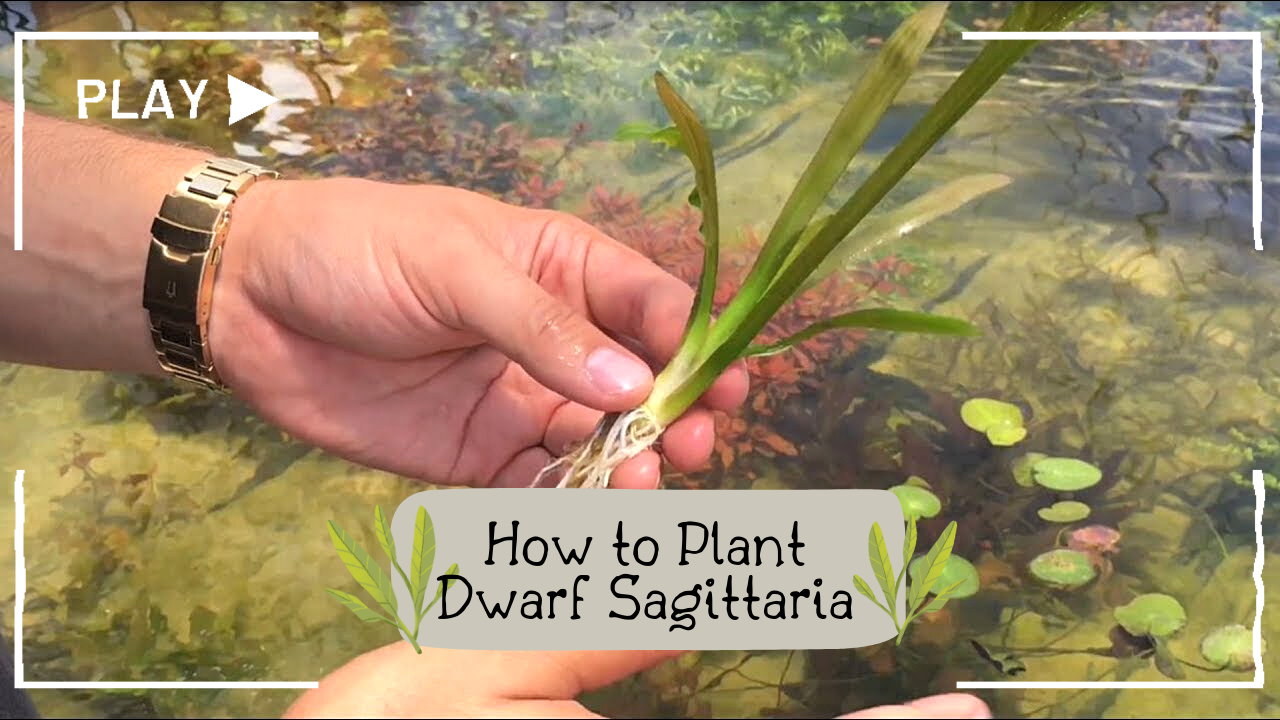
Planting Dwarf Sagittaria
Ready to plant your new carpet of Dwarf Sagittaria? Simply press the roots into your chosen substrate, maintaining a distance of at least an inch between each plant. You can trim the roots a bit to encourage faster growth, but it’s not mandatory. Check out this video for tips on achieving a lush, green carpet with the Dry Start Method!
Note: Avoid attaching Sagittaria to driftwood or any other surface as it is a plant that obtains nutrients through its roots.
Propagating Dwarf Sagittaria
Once established, Dwarf Sagittaria is one of the easiest plants to propagate! In fact, you’ll probably be spending more time trying to keep the plant in check, lest it takes over the entire bottom of your tank. Dwarf Sagittaria will start sending off runners along and under the substrate even before its fully established itself with healthy roots.
Step-by-Step Guide to Propagating Dwarf Sagittaria:
Step 1: Set the stage: Get your tank ready for a beautiful underwater garden! Ensure that your aquarium is equipped with moderate lighting, a cozy water temperature between 68°F-82°F (20°C-28°C), and a nutrient-rich substrate for your Dwarf Sagittaria to flourish.
Step 2: Let the planting party begin: Grab your trusty aquarium tweezers and plant four to five healthy specimens, about 1 inch (2-3 cm) deep into the substrate. Make sure they have enough room to breathe by leaving 2-3 inches (5-7 cm) of space between them. But remember, no burying root crowns too deep – we don’t want any rotten surprises!
Step 3: Give your plants a haircut: Who doesn’t love a fresh trim? Snip a few leaves off each plant to redirect their energy towards producing more runners. Before you know it, your Dwarf Sagittaria will be sending out runners like a champ.
Step 4: Watch the magic unfold: Keep an eye on the runners as they spread along and under the substrate. These little explorers will form buds, sprout leaves, and eventually develop into mini versions of the parent plant.
Step 5: Time for a nursery: Once the clones have grown, you can either let them continue their expansion or pinch off the runners to transplant them to new locations in your aquatic kingdom. Gently remove the runner with tweezers and replant it in its new home, following the same planting guidelines as in step 2.
Step 6: Shower them with love: Keep the party going by maintaining the proper lighting, temperature, and nutrients to help many plants in your Dwarf Sagittaria carpet thrive.
Helpful Tip: To accelerate the propagation of Dwarf Sagittaria is to trim a few leaves from each plant, which will prompt the plant to allocate more energy towards creating additional runners, resulting in a quicker spread and achieving the desired carpet effect.
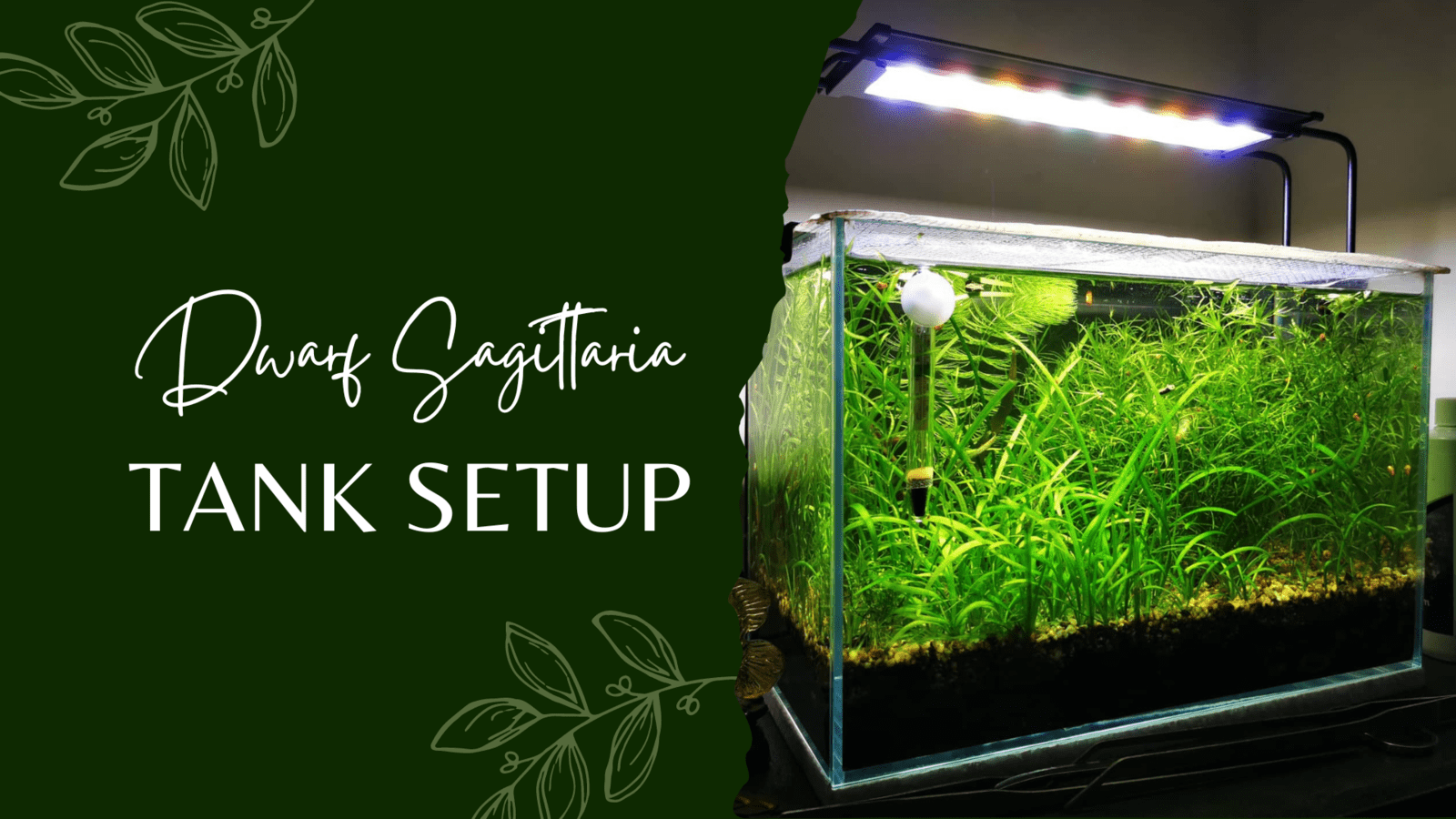
Tank Setup for Dwarf Sagittaria Care
A tank size of at least 10 gallons is recommended for Dwarf Sagittaria grows, although smaller, nano tank can also accommodate this plant species. Carbon dioxide injection is not required but can be beneficial for promoting more rapid growth.
This plant really does need a fair amount of light; most plants have at least moderate levels to survive. In low light conditions Dwarf Sagittaria tends to wither and die because it lives along the bottom of the tank or water column, where light conditions are lowest.

How tall the plant grows and how well it carpets also depends on your lighting. Under dimmer bulbs your Dwarf Sagittaria will tend to grow tall and lanky, straining for the light. It also won’t carpet nearly as well.
But under bright lighting the plant will stay compact and shoot off in all directions, trying to maximize how much surface area it covers, good setup!
Aquascaping with Dwarf Sagittaria
Dwarf Sagittaria is popular with aquarists of all skill levels because it is tremendously easy to aquascape with and very versatile. It is most commonly used as a fore and midground filler plant. Sagittaria will colonize any open areas of the substrate so it’s best to get all of your mid and background plants in place and established first before letting it go wild.
In fact, it can be a little too easy to grow in the right conditions! Dwarf Sagittaria is taller than just about any other carpeting plant and will shade out the more light hungry types.
If left unchecked, it can also overwhelm slower growing, shorter plants like baby Cryptocoryne. So you may have to periodically prune back the plant, or more likely, cut and remove runners that are getting too invasive.
Dwarf Sagittaria should be placed in the mid-ground or foreground of the aquarium, creating a lush carpet effect. Combine it with taller plants and driftwood to create a diverse and visually appealing environment for your fish and other aquatic life.
Some suitable plants to pair with Dwarf Sagittaria in your aquarium include:
- Anubias Nana
- Java Fern
- Water Wisteria
- Amazon Sword
- Guppy Grass
Remember: strong lighting is key for a thick, low-growing carpet. The weaker your light, the taller and weedier your Sagittaria will grow, trying to reach the “sun.”
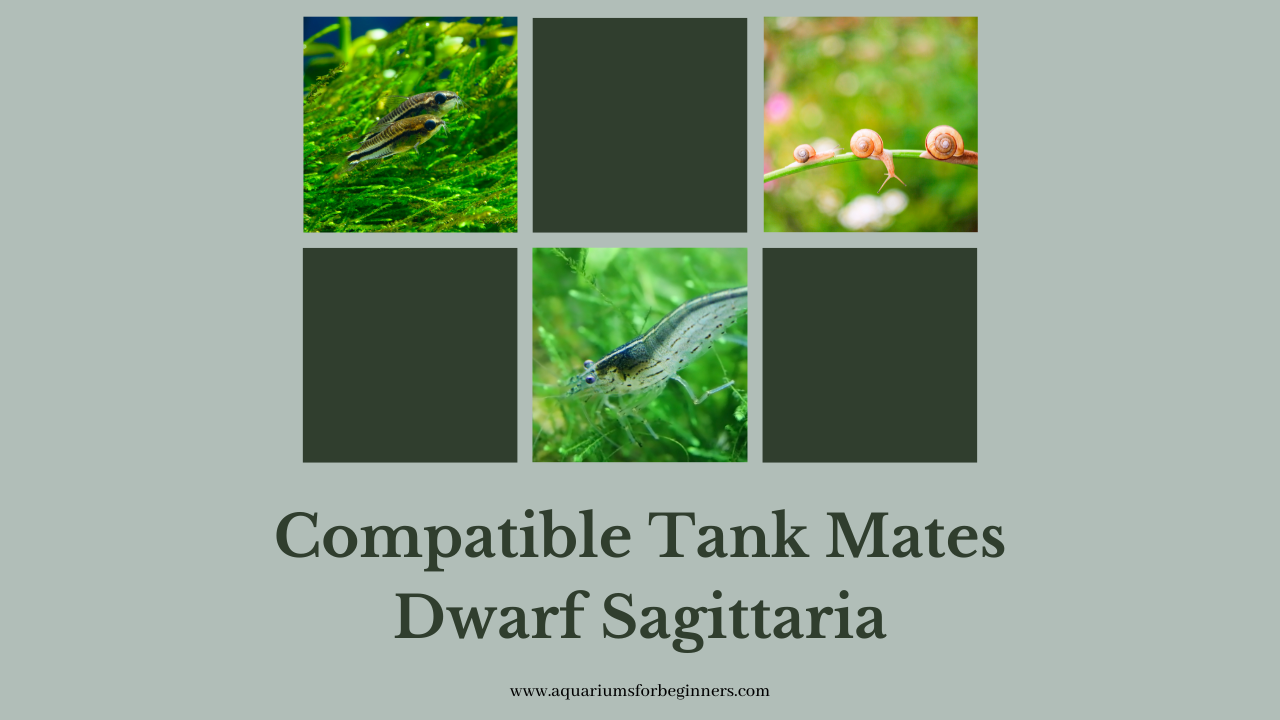
Compatible Tank Mates for Dwarf Sagittaria
Dwarf Sagittaria is compatible with a wide range of fish species and invertebrates, including small schooling fish species, like tetras and rasboras, as well as shrimp, such as cherry shrimp and orange sakura. Together, they’ll create an underwater utopia that’ll make your aquarium look like a scene straight out of Finding Nemo.
Dwarf Sagittaria appreciates neighbors who respect their personal space and won’t nibble on their leaves or uproot them from the substrate.
Now, let’s talk about who can join this plant party. Here’s the VIP list:
- Peaceful Fish: Otocinclus Catfish, Pygmy Cory Catfish, Neon tetras, Guppy, Cherry Barb, Green Swordtails, Rasboras, and Red or Blue Wagtail Platy are all welcome guests.
- Shrimp: From Neocaridina species like Red Cherry Shrimp to Caridina species like Crystal Red Shrimp, all shrimp are invited. Amano, Ghost, Bamboo, and Vampire Shrimp can RSVP too.
- Snails: Ramshorn, Nerite, Malaysian Trumpet, Japanese Trapdoor, and Mystery snails can join the fun, just as long as they don’t get too nibbly.
Who’s not on the list? Well, we don’t want any party crashers like Goldfish, Oscars, or Rainbow fish who’ll chow down on our plant pals. And let’s be honest, crayfish and crabs just don’t know how to behave around greenery, so they’re better off sticking to their floater plant parties.
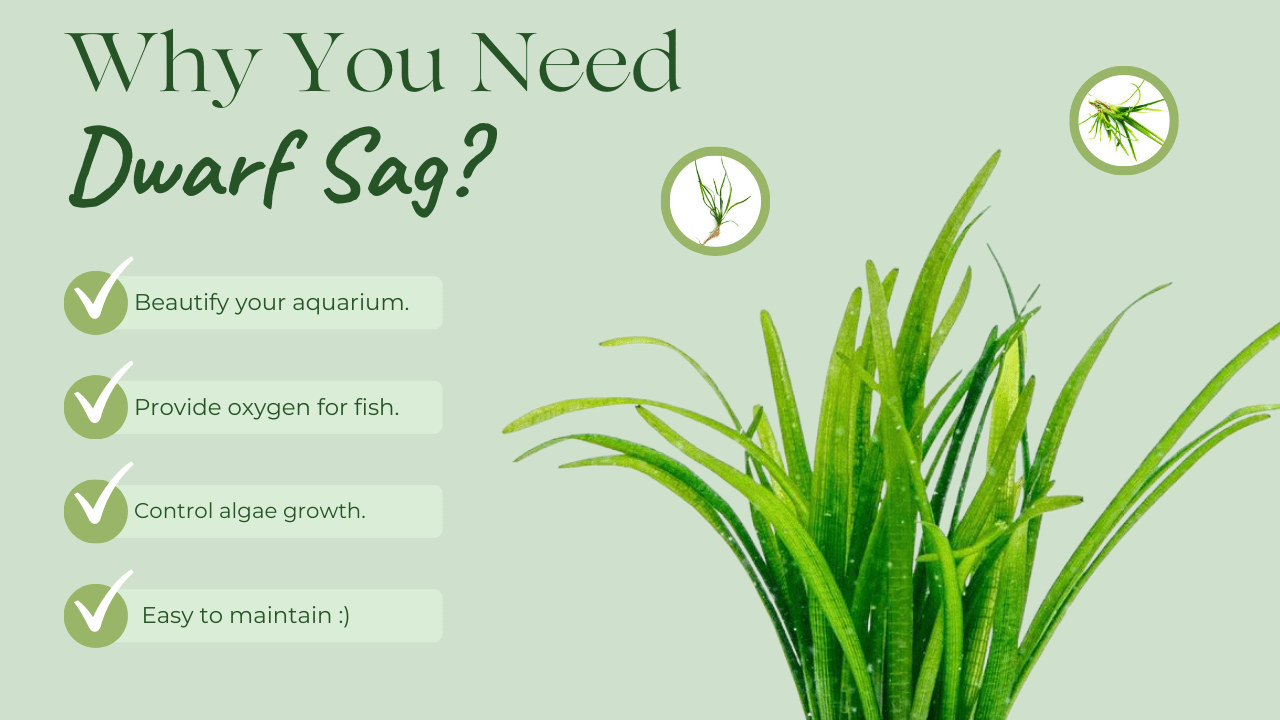
Why You Need Dwarf Sagittaria in Your Life
Aquascape: This plant is a total badass. It grows like crazy and makes your tank look awesome. Especially if you’re into that Iwagumi style. Trust me, you want this plant.
No more stinky gas: Dwarf sagittaria has roots that dig deep into the substrate and break up those nasty gas pockets that smell like rotten eggs. You know, the ones that can kill your fish or shrimp. Yeah, not cool.
Snack time: This plant is also a great source of biofilm, which is like a buffet for your baby fish and shrimp. They’ll love munching on that stuff and grow up big and strong.
Hide and seek: Dwarf sagittaria creates a thick carpet that gives your shrimp and fish a place to hide and chill. It’s also a great spot for them to get busy and make more babies.
Breathe easy: And of course, this plant helps to oxygenate the water, which is good for everyone. Unless you’re a vampire fish. Then you’re out of luck.

Frequently Asked Questions for Dwarf Sagittaria Care
Is Dwarf Sagittaria Suitable for Beginner Aquarists?
Yes, Dwarf Sagittaria is an excellent choice for beginners due to its hardiness and adaptability to a wide range of water conditions.
Can Dwarf Sagittaria Be Kept in a Low-Tech Planted Tank?
Yes, Dwarf Sagittaria can thrive in low-tech planted aquarium tanks, provided that it receives adequate lighting and a nutrient-rich substrate.
Are Aquatic Plants easy to grow?
Aquatic plants are easy to grow if you follow some basic guidelines:
- Choose healthy and pest-free plants from reputable sources.
- Acclimate the plants to your tank conditions gradually.
- Plant them properly in the substrate or attach them to hardscape materials.
- Provide adequate lighting for the plant’s needs.
- Fertilize the plants regularly with macro and micro nutrients.
- Inject CO2 if needed for high-light and high-fertilization tanks.
- Trim and prune the plants regularly to maintain their shape and health.
- Remove any dead or dying leaves and stems to prevent algae growth.
- Propagate the plants by cutting or dividing them when they become too large or crowded.
How Many Dwarf Sagittaria Plants Should Be Planted per Gallon?
There is no strict rule on the number of Dwarf Sagittaria plants per gallon, but spacing them 1-2 inches apart when planting is a good guideline to follow.
Can Dwarf Sagittaria Be Planted in Gravel?
While Dwarf Sagittaria can grow in gravel, it prefers a nutrient-rich substrate to support healthy root development.
How Often Should I Fertilize Dwarf Sagittaria?
Fertilize Dwarf Sagittaria according to the instructions on your chosen liquid fertilizer, typically every 1-2 weeks.
How to Deal with Dwarf Sagittaria Melting?
Melting is a common issue when introducing new aquatic plants to an aquarium. Be patient and provide your aquarium plants proper care, as the plant will likely recover and produce new growth.
Does Aquatic plant need CO2?
Aquatic plants can benefit from supplemental CO2 injection, especially in high-light and high-fertilization tanks. CO2 injection can enhance the growth rate, color and health of aquatic plants.
However, CO2 injection also requires careful monitoring and adjustment of the pH and KH levels to avoid harming the fish and other inhabitants. CO2 injection is not necessary for low-light and low-fertilization tanks, where the natural CO2 supply is sufficient for the plant’s needs.
Is dwarf sag an invasive species?
Dwarf sag is not an invasive species in its native range, where it coexists with other native plants and animals. However, it can become an invasive species if it is introduced to areas where it is not native and where it has no natural predators or competitors.
What is the best lighting for Dwarf Sagittaria to grow healthy and green?
Dwarf Sagittaria is a low-light aquatic plant that can grow well in a range of lighting conditions. However, it prefers moderate to high lighting to produce lush and green leaves.
Lighting Dwarf Sagittaria for about 10 to 12 hours a day can help it thrive and prevent algae growth. If the lighting is too low, the plant may become leggy and pale.
How to prevent iron deficiency in Dwarf Sagittaria that causes light green stalks?
Dwarf Sagittaria can suffer from iron deficiency if the water column or the substrate does not provide enough iron for the plant’s roots to absorb. This can result in light green stalks and yellowing leaves.
To Prevent: you can add iron-rich fertilizers to the water column or the substrate regularly. You can also use iron-rich substrates such as laterite or fluorite that can release iron slowly over time.
What are the differences between Sagittaria subulata and its varieties such as broadleaf sagittaria, rosette plant and narrowleaf sagittaria?
Sagittaria subulata is the scientific name of Dwarf Sagittaria, a perennial plant that belongs to the Alismataceae family. It is native to the eastern United States and South Carolina, where it grows in shallow waters and wetlands.
There are several varieties of Sagittaria. Some of them are:
- Broadleaf sagittaria (Sagittaria subulata var. latifolia): This variety has broader and shorter leaves than the typical Dwarf Sagittaria. It can grow up to 6 inches tall and 1 inch wide. It is more suitable for larger tanks and can be used as a mid-ground or background plant.
- Rosette plant (Sagittaria subulata var. pusilla): This variety has smaller and rounder leaves than the typical Dwarf Sagittaria. It can grow up to 4 inches tall and 0.4 inches wide. It forms dense rosettes that can carpet the substrate. It is more suitable for smaller tanks and can be used as a foreground or mid-ground plant.
- Narrowleaf sagittaria (Sagittaria subulata var. subulata): This variety has narrower and longer leaves than the typical Dwarf Sagittaria. It can grow up to 18 inches tall and 0.1 inches wide. It has a more vertical growth habit and can reach the water surface. It is more suitable for taller tanks and can be used as a background or mid-ground plant.
How to propagate Dwarf Sagittaria by producing runners and separating healthy roots?
You can propagate Dwarf Sagittaria by separating healthy roots from the parent plant or from the runner segments. You should use sharp scissors or a razor blade to cut off any roots that have at least one leaf attached to them. You should then replant them in the substrate with enough space between them to allow them to grow.
Where to Buy Dwarf Sagittaria?
So, you’re thinking about getting your hands on some Dwarf Sagittaria, huh? Well, good news, my friend! This trendy little aquatic plant species is the talk of the underwater town, and you can find it practically everywhere – both in your friendly neighborhood pet store and on the ol’ interwebs.
And the best part? It’s as affordable as they come, starting at just $10 for a bundle of 5 stems or more. Visit ChiChi’s Aquatic Dreams to get your Dwarf Saggitaria and other plant needs directly shipped to you!
You might even snag a cutting from a fellow aquarist in our Aquariums For Beginners Facebook Group!

Conclusion
Dwarf Sagittaria (Sagittaria subulata) is a hardy aquatic plant species that can grow in various water conditions and lighting levels. It is native to some areas of South America and the Atlantic coast of North America, where it can be found in estuaries, marshes, and shallow waters.
Dwarf Sagittaria is also known as awl-leaf arrowhead, Hudson Sagittaria, or ribbon Wapato. It has bright green, arrow-shaped leaves that form dense clusters as it produces runners. Dwarf Sagittaria is a great plant for planted aquariums, as it provides cover and oxygen for fish and other plant species.
It can be planted in the foreground or mid-ground of the tank, depending on its growth habit and tank size. Dwarf Sagittaria requires moderate lighting and a nutrient-rich substrate to thrive. It can also benefit from aquarium and substrate fertilizers, especially if it shows signs of iron deficiency.
Dwarf Sagittaria is easy to propagate by cutting the runners and replanting them in the substrate. It can also produce male flowers and female flowers that float on the water surface or emerge above it. Dwarf Sagittaria is suitable for beginner aquarists, as it is easy to care for and adaptable to different environments.
However, it can also become an invasive species if not controlled, so it is important to trim it regularly and prevent it from crowding out other plants. Dwarf Sagittaria is one of the few aquarium plants around that can grow both fully and partially submerged, making it a versatile and attractive addition to any aquarium.
No comments

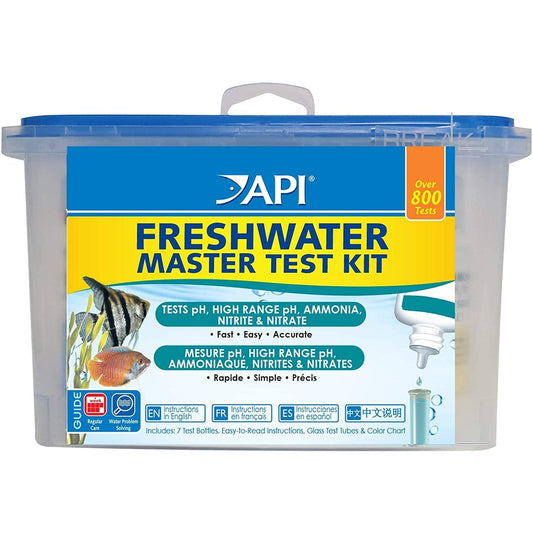
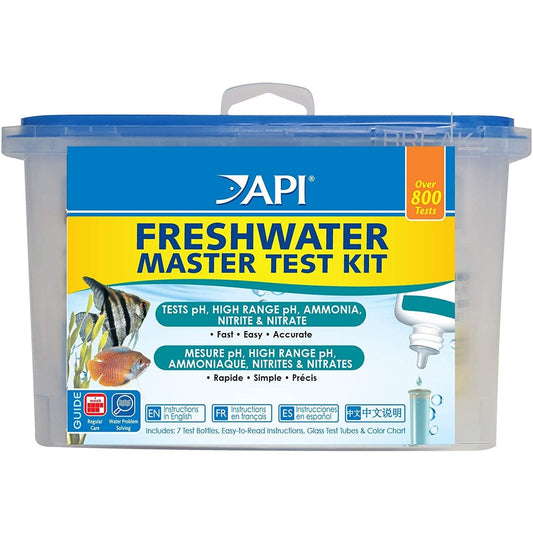
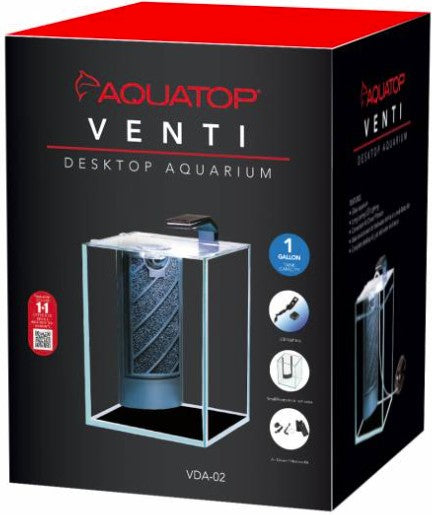



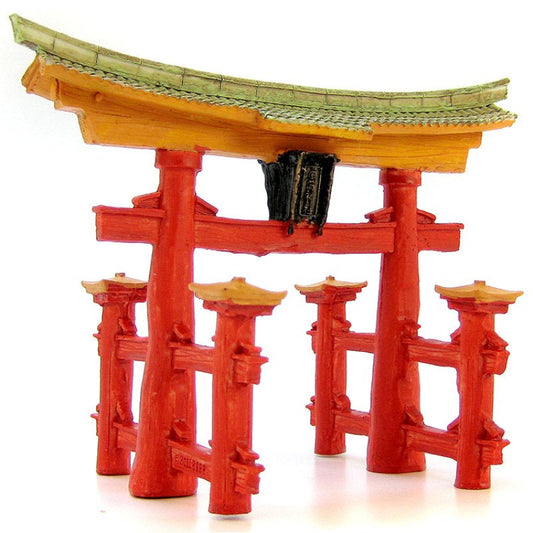


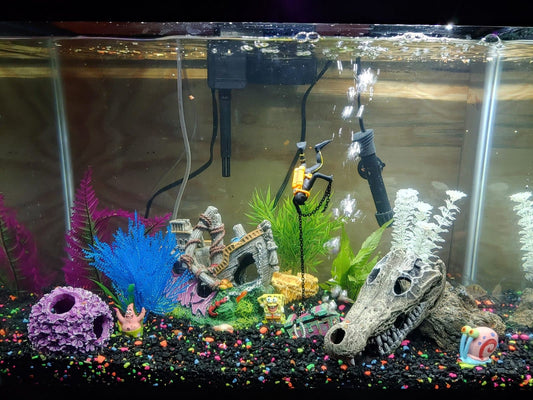



0 comments